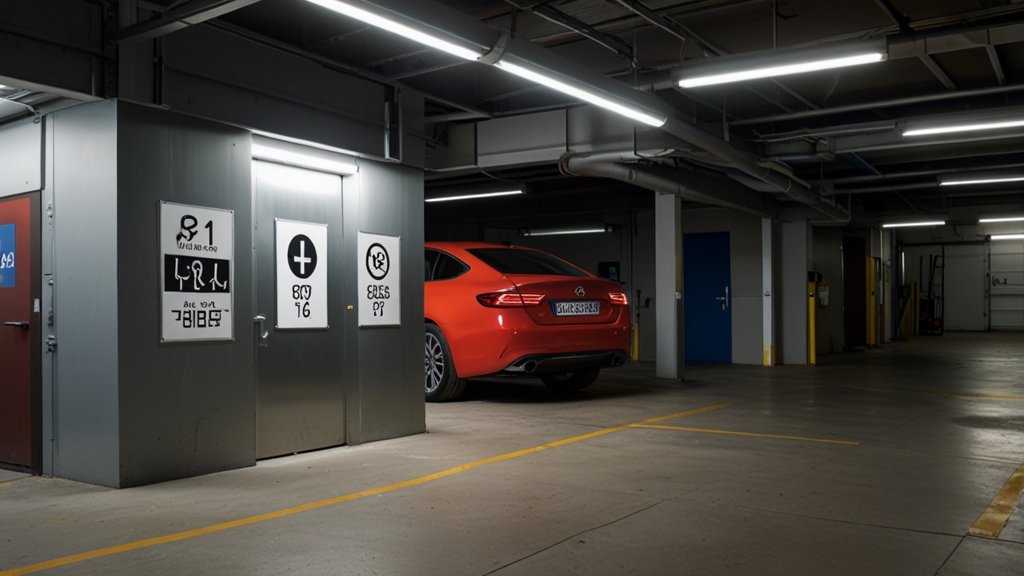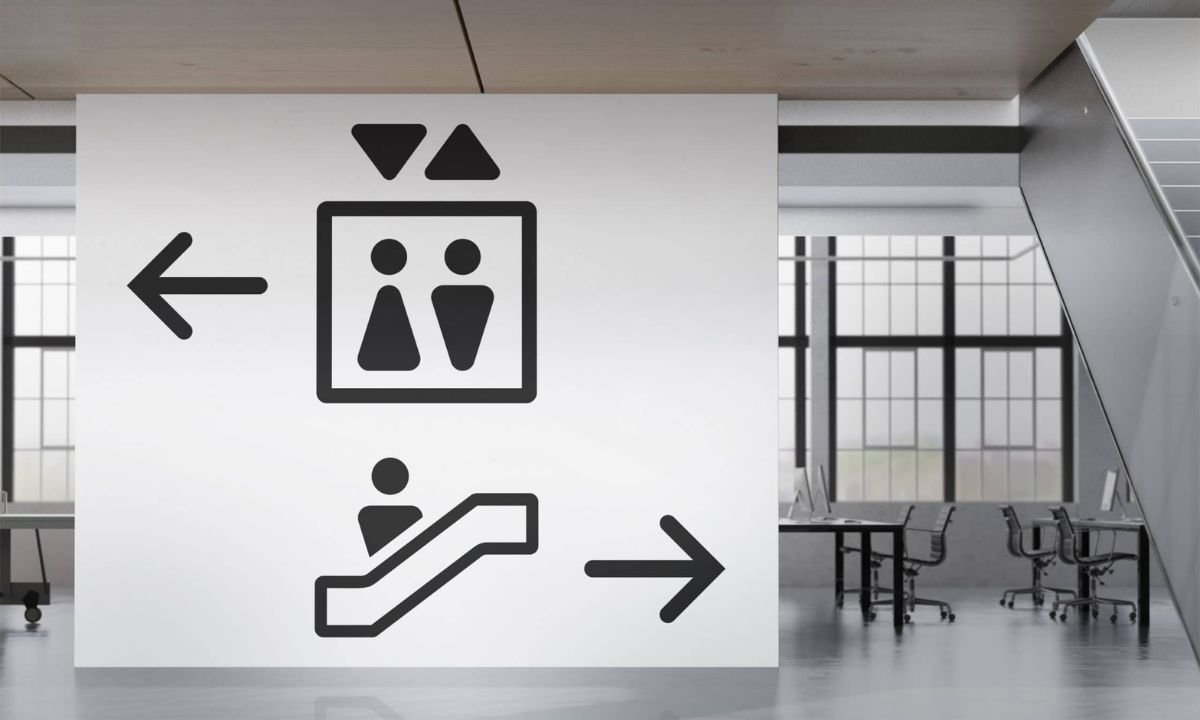Table of Contents:
- Understanding the Importance of Wayfinding in Multi-Level Garages
- Principles of Effective Wayfinding Sign Design
- Optimal Placement and Visibility on Every Level
- Integrating Digital Technology Into Wayfinding
- Ensuring Accessibility for All Drivers
- Maintaining and Updating Signage Systems
- Environmental and Safety Considerations
- Looking Ahead: Trends in Garage Wayfinding
Understanding the Importance of Wayfinding in Multi-Level Garages
Navigating a multi-level parking garage can be stressful without a clear guidance system. With multiple floors, tight corners, and various entry and exit points, clear wayfinding signage is a cornerstone in helping drivers find their way efficiently. Digital parking signs have become vital, providing up-to-the-minute information and visually guiding drivers to available spaces. Properly installed digital parking signs can reduce congestion, minimize frustration, and even reduce search time by up to 30%, making the driver’s experience more convenient and the facility more efficient.
Consistent and thoughtfully designed wayfinding systems can also prevent accidents and confusion. They play a critical role in streamlining traffic flow, supporting emergency evacuations, and helping pedestrians stay safe inside busy structures. Smart garages today start with a foundation of excellent signage, ensuring that every visitor can quickly orient themselves upon entry.
Principles of Effective Wayfinding Sign Design
Great wayfinding design combines clarity, simplicity, and intuitive cues to help people confidently move through a space. The typeface should be bold and easy to read from varying distances, while colors should provide enough contrast for legibility in daylight and dim lighting. Utilizing icons, arrows, and universally understood symbols speeds up decision-making for both local and international visitors. Consistency is equally important—signs should follow a unified theme, reducing cognitive load and providing reassurance at every turn. Placement should anticipate driver behavior, with repeated cues leading to decision points and reducing last-minute lane changes.
Incorporating universal graphic standards ensures people with different language backgrounds or varying vision capabilities can rely on the guidance. Avoid cluttered messaging or too much text, as streamlined instructions result in the best outcomes for drivers and pedestrians.
Optimal Placement and Visibility on Every Level
Vertical and horizontal sightlines are crucial for effective guidance in multi-level garages. Signs should be positioned at key junctures: at entries and exits, before turns, at all elevator bays, stairwells, and near color-coded zones. High-mount placement prevents view obstruction from parked vehicles and ensures lines of sight from far distances. Proper lighting or backlit options keep signage visible at all hours, particularly in underground or roofed sections with limited natural light.
Repetition aids memory and prevents missed instructions—this means consistent reminders when drivers ascend or descend ramps and at every transition. Pairing signage with painted ground cues or wall graphics can help anchor the wayfinding system, assisting those who might overlook overhead displays.
Integrating Digital Technology Into Wayfinding
Digital parking signs have introduced dynamic, real-time navigation to parking facilities. These signs can display live updates on available spaces by level, notify users about temporary closures, or direct traffic flow during peak periods. Integrating technology with traditional static signs creates a holistic system: digital displays at key points offer flexibility and can communicate essential alerts or changes instantly. Modern developments like touchscreen directories or Bluetooth-enabled guidance apps continue to shape user experiences by offering even more customized assistance.
As outlined by Smart Cities Dive’s review of urban parking technology, combining sensors, automatic space counters, and responsive signage, future-proofs garages for expansions and shifts in demand. Operational savings and better customer satisfaction often offset the cost of integrating these innovations.
Ensuring Accessibility for All Drivers
Accessibility is fundamental in every public facility, and garages are no exception. Best practices dictate that wayfinding systems should incorporate features that assist users with disabilities through tactile paving, Braille on elevator signage, or audible wayfinding announcements in key areas. Bright color contrasts, large type, and clear directional arrows support those with vision impairments. It’s essential to regularly evaluate the needs of drivers and pedestrians, ensuring compliance with the ADA and other relevant guidelines by maintaining accessible routes from parking spaces to lifts and exits.
Maintaining and Updating Signage Systems
Maintenance is key to a reliable wayfinding system. Over time, environmental wear and operational changes can render information outdated or signs less visible. Regular audits and cleaning schedules are crucial to prevent faded lettering, broken backlights, or outdated directional arrows. Digital signage requires software updates to remain accurate and relevant, with remote diagnostics helping operators identify issues before they disrupt the user experience. Building an ongoing feedback system, such as QR codes for driver comments, ensures signs remain up to standard and adapt to evolving facility layouts.
Environmental and Safety Considerations
Efficient wayfinding minimizes excess driving, directly reducing emissions inside parking environments. Lower congestion and quicker navigation improve air quality, especially in enclosed facilities. The use of LED lighting and energy-efficient digital screens supports sustainability initiatives while delivering consistent visibility. Safety is enhanced when signage clearly highlights pedestrian crossings, restricted zones, and emergency exits. In situations requiring evacuation, illuminated signs and well-marked escape routes can save lives by reducing confusion and panic.
Looking Ahead: Trends in Garage Wayfinding
The future of parking garage wayfinding will likely increase integration between physical signage and personal smart devices. Digital parking signs are already being paired with mobile apps that provide turn-by-turn directions and real-time space availability notifications, enhancing efficiency and personalization. Advancements in augmented reality could soon overlay directional instructions directly onto a driver’s smartphone display for hyper-localized navigation inside the structure. As city infrastructures evolve to support greener and smarter transportation, adopting these technologies meets user expectations and ensures long-term adaptability for new mobility trends.
YOU MAY ALSO LIKE: Quality Auto Glass: Enhancing Road Safety and Visibility











